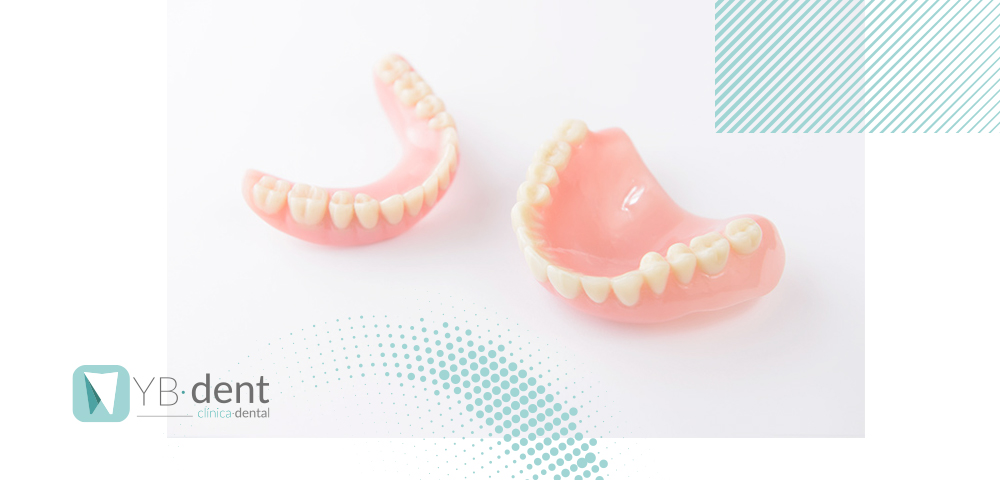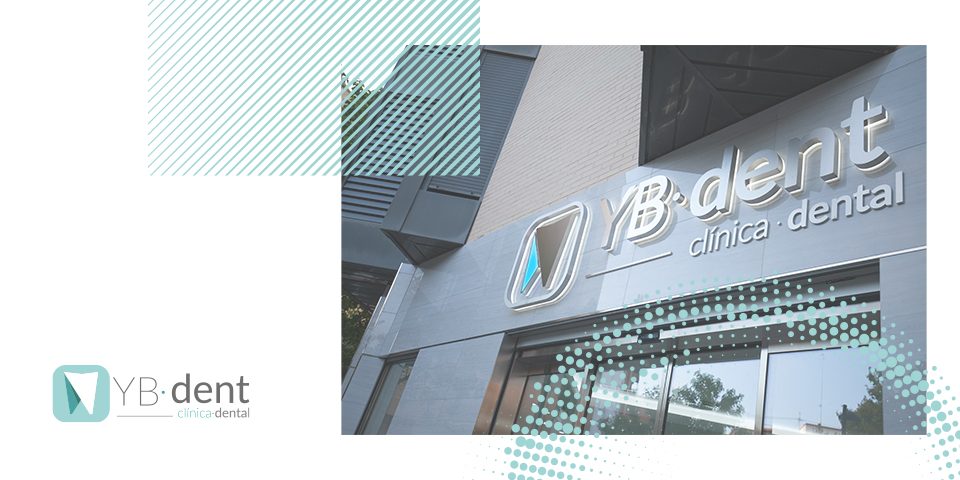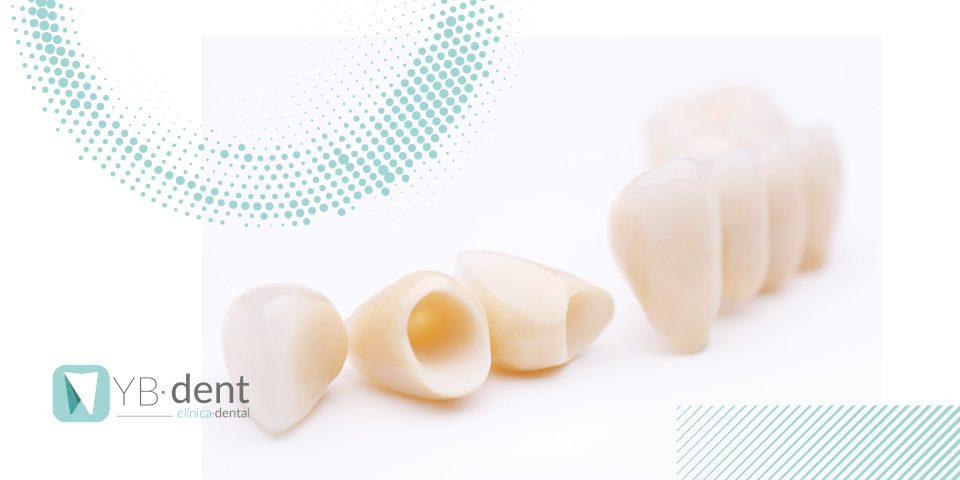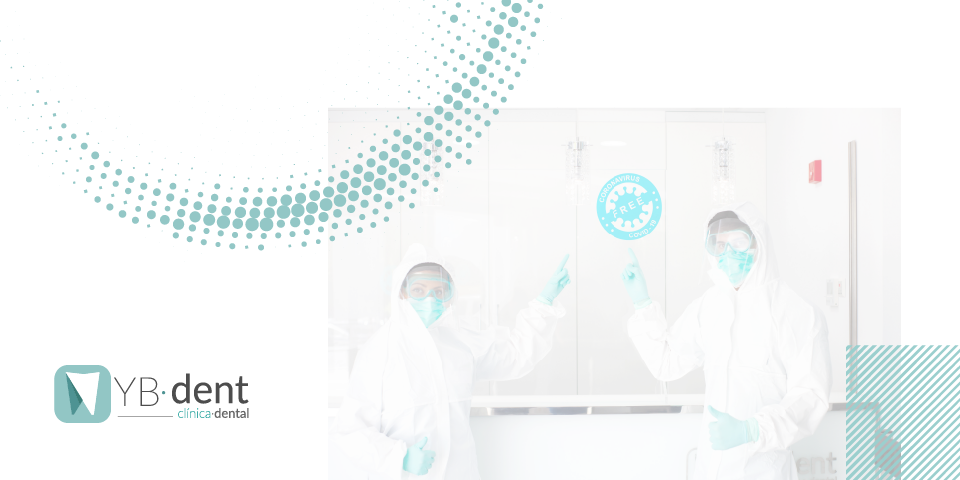Todo lo que necesitas saber sobre la prótesis dental

Desde Clínica Dental Valencia YBdent, te contamos en este artículo todo lo que necesitas saber sobre la prótesis dental. Te explicaremos qué es y los tipos que puedes encontrar en Clínica Dental YBdent. Ahora bien veamos que es una prótesis dental según los dentistas.
Se trata de una una restauración artificial parcial o total de la anatomía de nuestra boca. En otros términos sería cubrir las piezas dentales que faltan en cualquier parte de la boca. Esto no solo sirve para mantener una boca en armonía, sino también para que el paciente recupere el funcionamiento normal de su boca. Llevando así una vida normal.
Tipos de prótesis dentales
Dentro de este mundo de la odontología, existen dos grupos. Por un lado podemos encontrar la prótesis dental fija y por otro lado, encontramos la prótesis dental removible. Esto varía dependiendo del caso que presente en la boca el paciente. Contacta con la Clínica Dental Valencia, YBdent. Nuestros especialistas te asesoran con su atención personalizada pudiendo así cubrir todas las necesidades de tu boca.
Prótesis dental fija
Como bien dice la palabra se trata de una “fija” que no puede ser quitada por el paciente. La prótesis dental fija, mayormente se recomiendan en los casos donde el paciente conserva un buen estado del hueso. Hay muchas personas que carecen de hueso. Si este es tu caso, te recomendamos que visites a nuestra clínica dental en Valencia, YBdent. Nuestros profesionales pueden realizarte un tratamiento previo. Restaurando así el hueso y el tejido que necesitarás para su posterior colocación.
Existen dos tipos principales de colocación. Por un lado la prótesis dental colocada sobre un puente o corona y por otra parte la que se coloca sobre implantes. ¡Contacta con tu clínica dental en Valencia YBdent! Nuestros dentistas te realizarán un estudio personalizado sobre tu boca.
Prótesis dental fija sobre corona
Este tipo de prótesis dental es utilizada para sustituir o cubrir varias piezas dentales. Se deben revisar los dos laterales de la boca, para saber qué piezas hay que reemplazar. Así podremos llevar a cabo una correcta colocación. Como primer paso hay que limar cuidadosamente los dientes para encajar y poder fijar la prótesis dental.
Estas prótesis son fabricadas en un taller. Las piezas pueden ser de circonio o cerámica. Pero para saber cual es la correcta en cada caso. En nuestra Clínica Dental Valencia YBdent, tenemos en cuenta el tamaño y color de los dientes de cada paciente. Pudiendo así sincronizar correctamente la boca y que quede lo más estético posible.
Prótesis dental fija sobre implantes
Normalmente, este tipo de prótesis dental se utilizan para realizar una restauración total sobre toda la arcada o también puede usarse para reconstruir la parte superior, la inferior o las dos. Los pacientes que mayormente utilizan este método, son aquellos que tienen sus piezas dentales bastante dañadas. También en aquellos que tienen pérdida total de piezas dentales.
¿Cuáles son sus ventajas?
Con este tipo de mecanismo, recuperarás el comportamiento normal. Es decir, con la fija, te sentirás igual o similar de cuando llevabas tus piezas originales. El resultado de llevar una fijada al hueso, le dará a tu boca una estética dental natural. ¡Vuelve a sonreír con la prótesis dental de la clínica dental YBdent!
Prótesis dentales removibles
A esta clase de prótesis dental se la conoce como dentadura postiza. Se pueden quitar y volver a colocar cuando quieras. Son utilizadas en pacientes que tienen problemas de hueso. Por lo cual no pueden llevar una prótesis fija.
¿Cuáles son sus ventajas?
Suelen ser las más económicas del mercado. Comparando con las fijas, no necesitas cirugía previa y lo mejor te las puedes quitar fácilmente para mantener la limpieza dental diaria.
¡Visita nuestra Clínica Dental Valencia YBdent! Nuestros especialistas te devolverán tu sonrisa natural. Puedes ponerte en contacto con nosotros a través del siguiente enlace. No lo dudes y luce una sonrisa perfecta.



